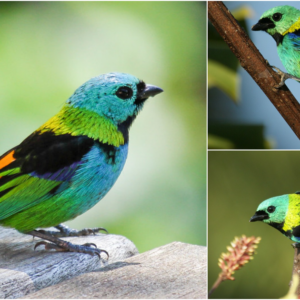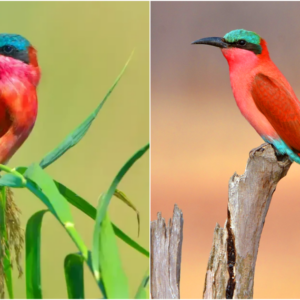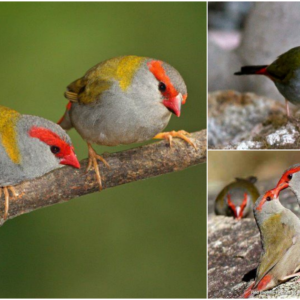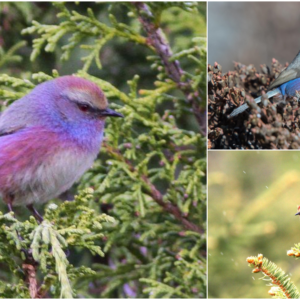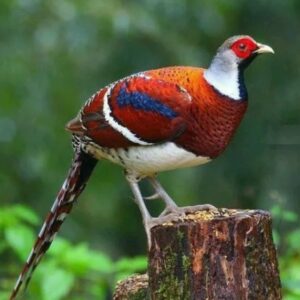
In a remarkable one-in-a-century event, an astonishing discovery has unfolded in the avian world: a mutant bird that defies conventional gender norms by embodying both male and female characteristics. This extraordinary specimen, identified as a honeycreeper, was sighted in Colombia, stunning both amateur birdwatchers and seasoned scientists alike.
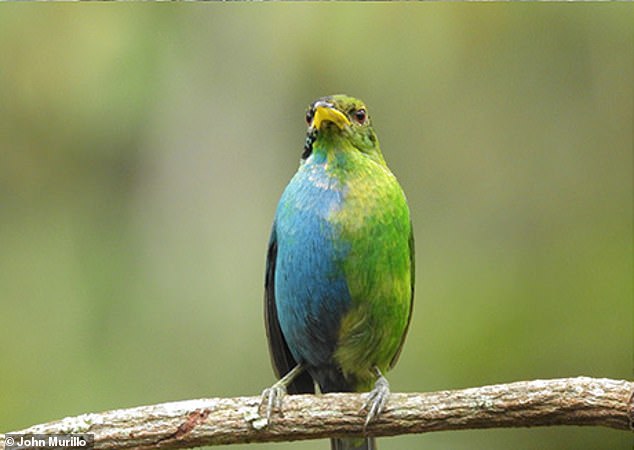
Unlike most birds, which exhibit either distinctly male or female traits, this honeycreeper boasts a mesmerizing plumage that blends hues of green and blue. Initially spotted by an amateur bird enthusiast, the bird’s unique appearance caught the attention of researchers at the University of Otago in New Zealand.
Upon closer examination, it became apparent that the bird’s dual-coloration mirrored its dual-sex nature. Typically, female honeycreepers display a verdant green hue, while males flaunt an aqua-blue shade. However, this exceptional individual defied categorization, with its striking plumage showcasing both colors in equal measure.
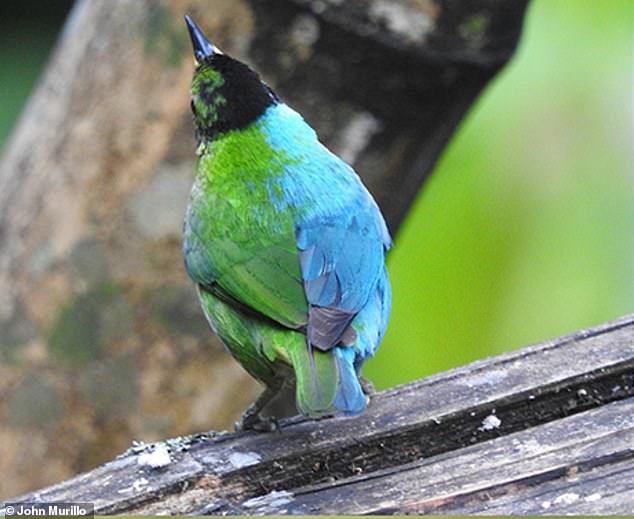
This dual-sex phenomenon, known as bilateral gynandromorphy, is exceptionally rare in birds, occurring as a result of an error during egg meiosis followed by double fertilization. In this case, one side of the bird’s body bears female cells, while the other side harbors male cells, leading to its distinctive appearance.
While gynandromorphy is more commonly observed in sexually dimorphic bird species, instances like this honeycreeper remain exceedingly rare. Only one other gynandromorph green honeycreeper has been documented, over a century ago, making this recent sighting a monumental event in ornithological history.
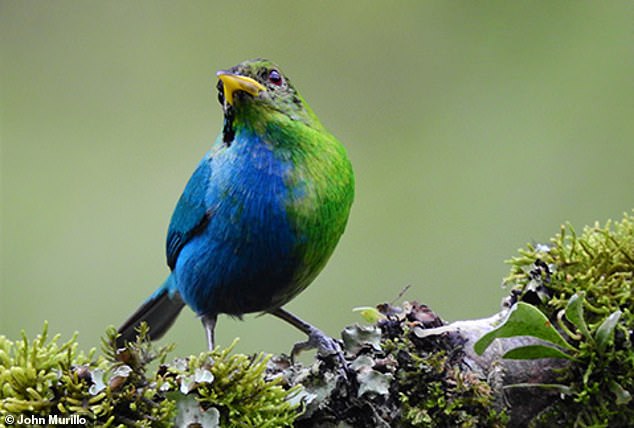
Despite its unique biology, the bird appeared to adapt to its surroundings, behaving much like its single-sex counterparts. However, its unusual appearance may have posed challenges in integrating into the local bird society, as observed by its cautious feeding behavior.
As scientists continue to study this exceptional specimen, it serves as a reminder of the remarkable diversity and complexity of the natural world. With its dual-sex nature and captivating presence, the mutant honeycreeper stands as a testament to the awe-inspiring wonders that await discovery in our planet’s rich tapestry of life.
